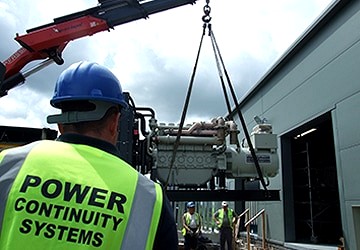
Enhancing Efficiency: Generator Removal and Rotary Flywheel Ups
In the dynamic landscape of energy production and consumption, innovations continually shape the efficiency and sustainability of power generation. Among the advancements, the strategies surrounding generator removal and rotary flywheel ups have emerged as transformative methods, revolutionizing energy systems across various industries.
The conventional approach to energy generation often involves large, stationary generators tied to specific power sources. However, as the need for flexible and sustainable energy solutions grows, newer techniques are being explored. One such innovation is the removal of traditional generators and the integration of rotary flywheel technology—a combination that redefines efficiency and reliability in power systems.
Generator removal, while it might sound counterintuitive at first, marks a pivotal shift in how we perceive power generation. Traditional generators, although effective, come with limitations in terms of scalability, adaptability, and response time. With the removal of these stationary units, the stage is set for the integration of more agile and versatile solutions.
Enter the concept of rotary flywheel ups. This innovative technology involves the utilization of rotating flywheels to store energy mechanically. These flywheels act as kinetic batteries, harnessing surplus energy when available and delivering it precisely when needed, thus enabling a more responsive and efficient power supply.
The synergy between generator removal and rotary flywheel ups introduces a paradigm shift in energy management. By eliminating the constraints associated with stationary generators, this approach offers several advantages:
- Enhanced Flexibility: Rotary flywheel ups provide a more flexible energy storage and release system. They can quickly respond to fluctuations in energy demand, offering a seamless transition between surplus and deficit periods.
- Improved Efficiency: The kinetic nature of flywheel technology ensures minimal energy loss during storage and discharge, thereby enhancing overall system efficiency. This efficiency boost contributes to a more sustainable energy ecosystem.
- Scalability: Unlike traditional generators, the modular nature of rotary flywheel systems allows for easy scalability. This adaptability makes them suitable for various applications, from small-scale energy grids to large industrial setups.
- Reduced Environmental Impact: With a focus on efficiency and sustainability, the integration of rotary flywheel ups contributes to a reduced environmental footprint. By optimizing energy usage and minimizing wastage, these systems align with the global push for greener technologies.
Implementing generator removal in favor of rotary flywheel technology isn’t without its challenges. The transition involves meticulous planning, investment, and a shift in infrastructure. However, the long-term benefits outweigh the initial hurdles, making it a worthwhile endeavor for industries seeking to optimize their energy systems.
Industries such as manufacturing, telecommunications, and data centers are embracing these innovations. The need for uninterrupted power supply and the drive towards sustainability makes the amalgamation of generator removal and rotary flywheel ups an attractive proposition.
Moreover, the advancements in material science and engineering are continuously refining flywheel technology, making it more efficient, durable, and cost-effective. These improvements further incentivize businesses to adopt this innovative approach to energy management.
The future of energy lies in adaptable, efficient, and sustainable systems. Generator removal coupled with rotary flywheel ups embodies this future—a transition towards more agile, responsive, and environmentally conscious power solutions. As industries continue to evolve and prioritize sustainability, this combination stands as a beacon of progress in the energy sector.
In conclusion, the synergy between generator removal and rotary flywheel ups heralds a new era in energy management. By discarding the constraints of traditional generators and embracing the agility of flywheel technology, industries can pave the way for a more efficient, reliable, and eco-friendly energy landscape. This transformative approach not only enhances operational capabilities but also aligns with the global pursuit of sustainable practices, ensuring a brighter and greener future for generations to come.












